FSX Piper Arrow IV PA-28T-201
 Piper Arrow IV PA-28T-201, non-turbo. Version for FSX with SP2. The PH-ANF is owned by the Rotterdam Flying Club. By Rien Cornelissen.
Piper Arrow IV PA-28T-201, non-turbo. Version for FSX with SP2. The PH-ANF is owned by the Rotterdam Flying Club. By Rien Cornelissen.
- Type
- Complete with Base Model
- Download hits
- 1.6K
- Compatibility
- Microsoft Flight Simulator X (FSX) including Steam Edition & Prepar3D (P3D)
- Filename
- arrowiva.zip
- File size
- 4.11 MB
- Virus Scan
- Scanned 25 days ago (clean)
- Access to file
- Free (Freeware)
- Content Rating
- Everyone
Piper Arrow IV PA-28T-201, non-turbo. Version for FSX with SP2. The PH-ANF is owned by the Rotterdam Flying Club. By Rien Cornelissen.

Piper Arrow IV PA-28T-201 in flight.
ArrowIVa.zip for FSX-with-SP2.
Installation: unzip ArrowIVa.zip to your Flight Simulator X folder. Make sure the option "use directories" is active, for the directory structure is contained within the .zipfile.
P28R_Gear.wav should be in place in the FS 9\sound folder, not!!! in the aircraft's own sound folder.
At first start of FS X after installing the Arrow there will be a question whether it is safe to use dsd_xml_sound3.gau. It is; see below.
Much of this model was present in earlier versions, but now I applied the textures, materials, animations, LOD's and camera positions in the way prescribed in the FS X SP2 sdk.
The textures are dxt mipmapped .dds files now. The exterior model contains LOD's: Levels-Of-Dilution; when the aircraft gets more remote, less detail is shown, requiring less processing time.
I made LOD 400, 150, 50, 15 and 5. In LOD 400 everything is present; in LOD 5 there are only flat, unanimated and untextured fuselage, wings and tail.
In the virtual cockpit I left out the pilot and the head rests in order to facilitate looking around.
The door will open, as usual, using . First the door latches will open, together with the storm window, a small window within
the window directly to the pilot's left, and then the door itself.
The bagage door will open and close by followed by <2>. The ribbon to keep this door in the open position
is present too.
The gear has suspension, as can be seen when moving on uneven ground. The wheels will spin while taxiing.
Like in the real Arrow the trim surface at the trailing end of the elevator wil move extra as the elevator is moved.
The left yoke in the virtual cockpit made the tachometer partly invisible, so I made it semi-transparent.
The panel instruments I made are in xml, they reside in the gauges\P28T.CAB file.
I added a "16x9" panel; this is meant for use with a wide screen monitor. High resolution recommended.
The subscale of the altimeter will read both hPa (=mBar) and inches of mercury. The tanks will contain 36 Gal. each, and the
fuel gauges will indicate "full" at that amount.
The annunciator panel is functional, as is the audio panel, on which sound of markers, nav 1 and 2, and ADF can be switched on and off.
The cockpit light and the navlights are toggled by left clicking the thumb wheel directly to the left left of the main power switch.
When turning the thumb wheel in the real PA28T, there will first be a click switching the nav lights on, and the rest of the travel it will be a rheostat for the cockpit panel light.
dsd_xml_sound3.gau and dsd_sounds.cfg are parts of a bridge from xml gauges to c-based gauges.
Xmlgauges can't trigger sounds by themselves, so the xmlgauge generates a variable that is read by dsd_xml_sound3.gau, and it is by this (invisible) gauge that the soundfiles are called.
dsd_sounds.cfg is a helpfile for this. No need for GaugeSound.dll any more.
Doug Dawson made this bridge as freeware (thanks, Doug); it is not allowed to use it commercially without his consent.
The gauges were placed using FS Panel Studio.
A special word about the P-effect:
I placed the engine slightly to the right of the midline in the flight dynamics (aircraft.cfg and Piper Arrow-IV.air) to simulate the P-factor:
In the real aircraft the propeller turns clockwise as seen from the pilot's seat.
Therefore, the propwash will take a spiraling trajectory along the fuselage. It will collide with the vertical fin, pushing it to the right,
thus causing the aircraft to turn left.
Moreover, a propeller blade that goes down will generate more thrust than one going upward because the former will have a higher speed
with respect to the air and will have a larger angle-of-attack, caused by the propeller axis being more pitch-up than the aircraft path.
This, too, adds to a tendency to turn left.
This so-called P-factor is compensated for cruise speed in the Cessna 172 with a bent strip of metal at the trailing end of the rudder;
in the Arrow by the rudder trim, but the degree of correction will depend upon airspeed.
In situations in which engine power is high with respect to airspeed (takeoff, climb, recovery from stall)
the pilot has to apply "right rudder".
This is the case in almost all single engine propeller aircraft; most engines (but not all) turn clockwise.
The P-factor adds to realism, but there are a few prerequisites:
1. The simpilot must have rudder pedals.
2. The pedal mechanism should have no mechanical play: its potentiometer should exactly follow the feet's movements.
3. In the settings menu the null zone for the rudder pedals must be set to zero. If the software that comes with the
pedals allows for a null zone, it should be set to zero too.
Still, if you don't like the P-factor, open aircraft.cfg, find
[GeneralEngineData]
engine_type= 0
Engine.0= 2.973, 0.800, 0.0
fuel_flow_scalar= 0.9
min_throttle_limit= 0.0
and change it to read
[GeneralEngineData]
engine_type= 0
Engine.0= 2.973, 0.0, 0.0
fuel_flow_scalar= 0.9
min_throttle_limit= 0.0
which will place the engine in the midline.
All of my files are public domain; you are allowed to do with them whatever you please without permission,
though I do appreciate to be notified of major changes.
The real Piper Arrow-IV PH-ANF is owned by Joep Wessels, one of the instructors of the Rotterdam Flying Club in the Netherlands, of which I am a member,
being a private-pilot-with-an-instrument-rating. I use this computer model to help me stay current.
I did my best to test everything for mistakes and to repair anything I found.
Given the complexity of an aircraft model, though, there won't be a guarantee.
Comment will be welcome, of course.
Rien Cornelissen
The archive arrowiva.zip has 53 files and directories contained within it.
File Contents
This list displays the first 500 files in the package. If the package has more, you will need to download it to view them.
| Filename/Directory | File Date | File Size |
|---|---|---|
| FILE_ID.DIZ | 01.23.08 | 167 B |
| fx_navgre2.fx | 01.20.08 | 4.74 kB |
| fx_navred2.fx | 01.20.08 | 4.73 kB |
| fx_navwhi2.fx | 01.20.08 | 4.75 kB |
| fx_recog2.fx | 01.20.08 | 2.42 kB |
| texture | 01.19.08 | 0 B |
| fx_2a.bmp | 01.20.08 | 42.74 kB |
| Effects | 01.21.08 | 0 B |
| dsd_xml_sound.ini | 06.10.07 | 124 B |
| dsd_xml_sound3.gau | 01.16.05 | 76.00 kB |
| P28T.CAB | 01.22.08 | 464.86 kB |
| gauges | 01.23.08 | 0 B |
| Piper Arrow-IV | 01.24.08 | 0 B |
| Aircraft.cfg | 01.24.08 | 13.09 kB |
| model | 01.24.08 | 0 B |
| model.cfg | 01.11.08 | 65 B |
| Piper_Arrow_IV.MDL | 01.24.08 | 1.69 MB |
| Piper_Arrow_IV_interior.MDL | 01.24.08 | 411.64 kB |
| panel.16x9 | 01.24.08 | 0 B |
| Arrow-IV_wide_panel.bmp | 05.26.06 | 1.26 MB |
| Arrow-IV_wide_panel_night.bmp | 01.18.08 | 1.26 MB |
| Arrow_IV_VCpanel_l.bmp | 01.21.08 | 1.00 MB |
| Arrow_IV_VCpanel_r.bmp | 01.21.08 | 1.00 MB |
| compass.bmp | 06.04.07 | 25.69 kB |
| Panel.cfg | 01.22.08 | 6.46 kB |
| panel.4x3 | 01.24.08 | 0 B |
| Arrow-IV_panel.bmp | 05.26.06 | 1.05 MB |
| Arrow-IV_panel_night.bmp | 01.18.08 | 1.05 MB |
| Arrow_IV_VCpanel_l.bmp | 01.21.08 | 1.00 MB |
| Arrow_IV_VCpanel_r.bmp | 01.21.08 | 1.00 MB |
| compass.bmp | 06.04.07 | 25.69 kB |
| Panel.cfg | 01.22.08 | 6.35 kB |
| Piper Arrow IV_Ref.txt | 08.23.01 | 554 B |
| Piper Arrow-IV.air | 04.01.07 | 8.03 kB |
| Piper Arrow-IV_notes.txt | 10.24.01 | 0 B |
| sound | 01.24.08 | 0 B |
| P28T_Stall.wav | 03.05.06 | 473.95 kB |
| Sound.cfg | 01.21.08 | 13.35 kB |
| texture | 01.24.08 | 0 B |
| Arrow4_0_T.dds | 01.22.08 | 682.79 kB |
| Arrow4_1_T.dds | 01.13.08 | 682.79 kB |
| Arrow4_2_T.dds | 01.19.08 | 341.45 kB |
| Arrow4_3_T.dds | 01.22.08 | 42.79 kB |
| Arrow4_4_T.dds | 01.22.08 | 5.45 kB |
| fresnel_ramp.dds | 01.12.08 | 4.12 kB |
| thumbnail.jpg | 01.23.08 | 31.71 kB |
| SimObjects | 01.24.08 | 0 B |
| P28R_Gear.wav | 03.05.06 | 115.40 kB |
| sound | 01.17.08 | 0 B |
| ArrowIVa.jpg | 01.23.08 | 5.24 kB |
| ArrowIVa_FSX_SP2_readme.txt | 01.23.08 | 6.38 kB |
| flyawaysimulation.txt | 10.29.13 | 959 B |
| Go to Fly Away Simulation.url | 01.22.16 | 52 B |
Installation Instructions
Most of the freeware add-on aircraft and scenery packages in our file library come with easy installation instructions which you can read above in the file description. For further installation help, please see our Flight School for our full range of tutorials or view the README file contained within the download. If in doubt, you may also ask a question or view existing answers in our dedicated Q&A forum.
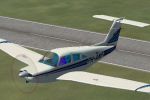
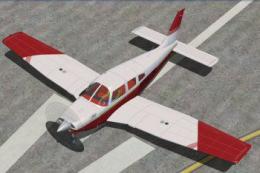

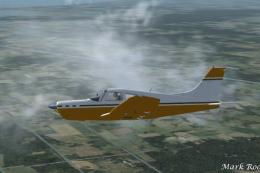
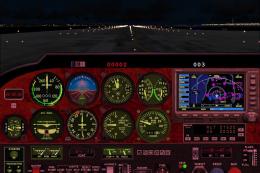

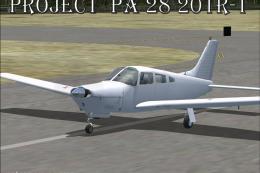
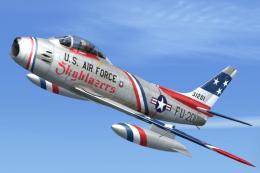
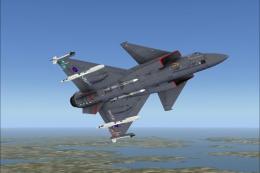
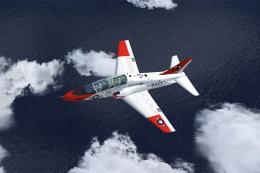
1 comments
Leave a ResponseThe content of the comments below are entirely the opinions of the individual posting the comment and do not always reflect the views of Fly Away Simulation. We moderate all comments manually before they are approved.
This Airplane is excellent, kudos to the creator! I would pay for this aircraft, it is beautiful, great job!